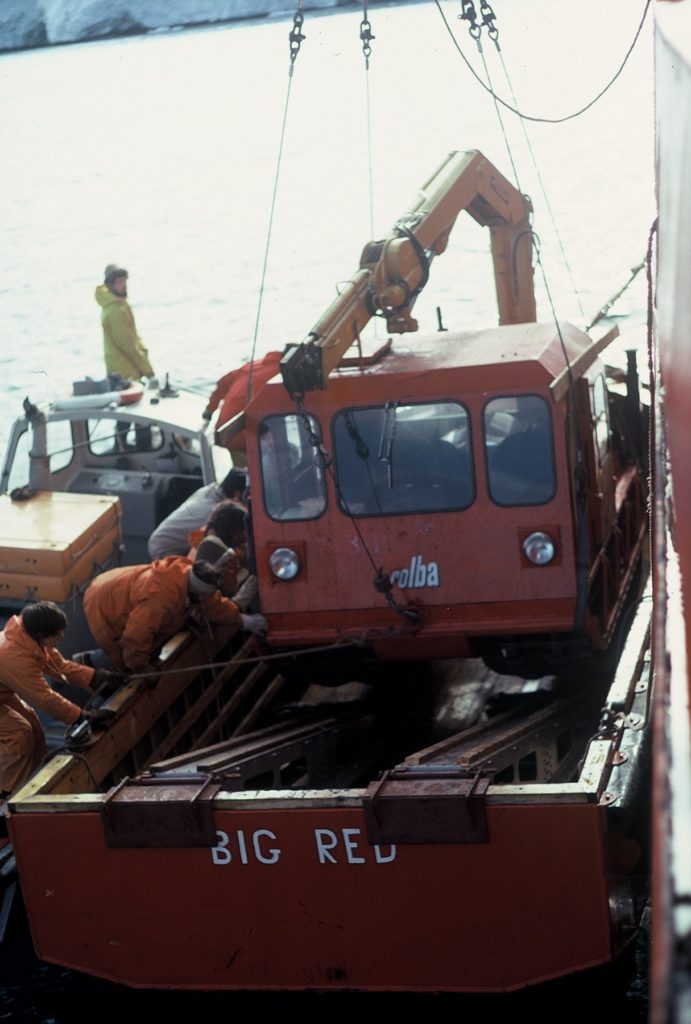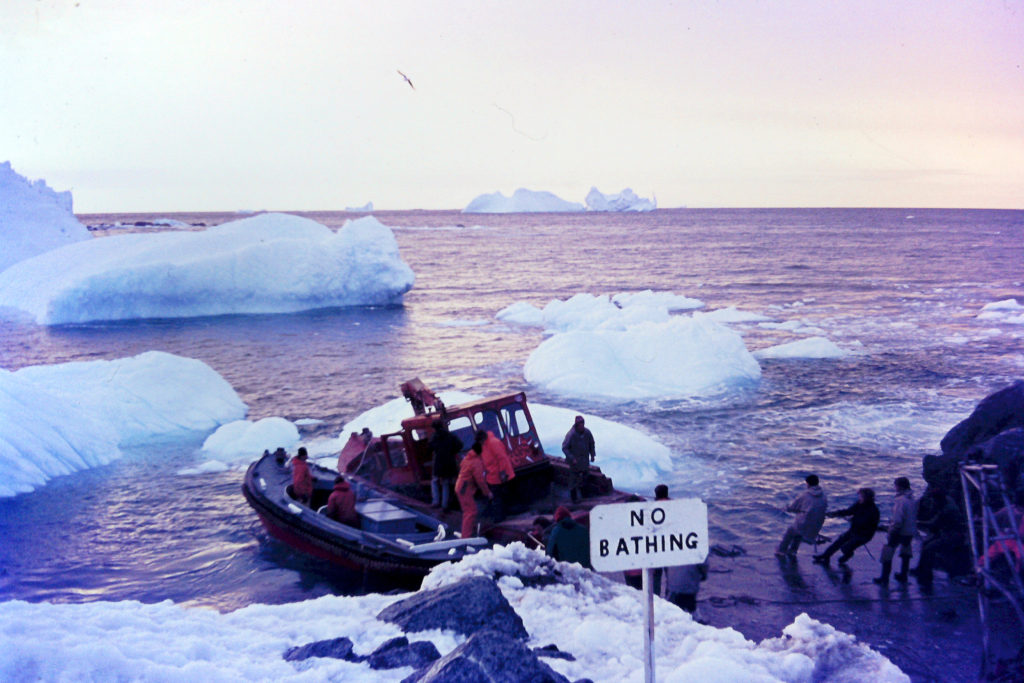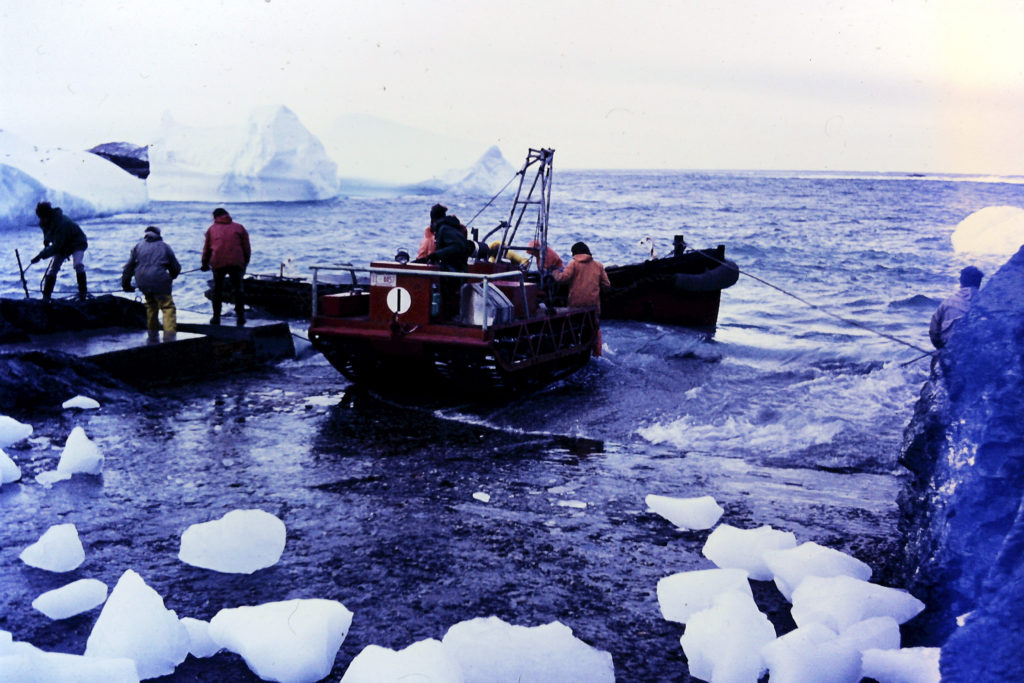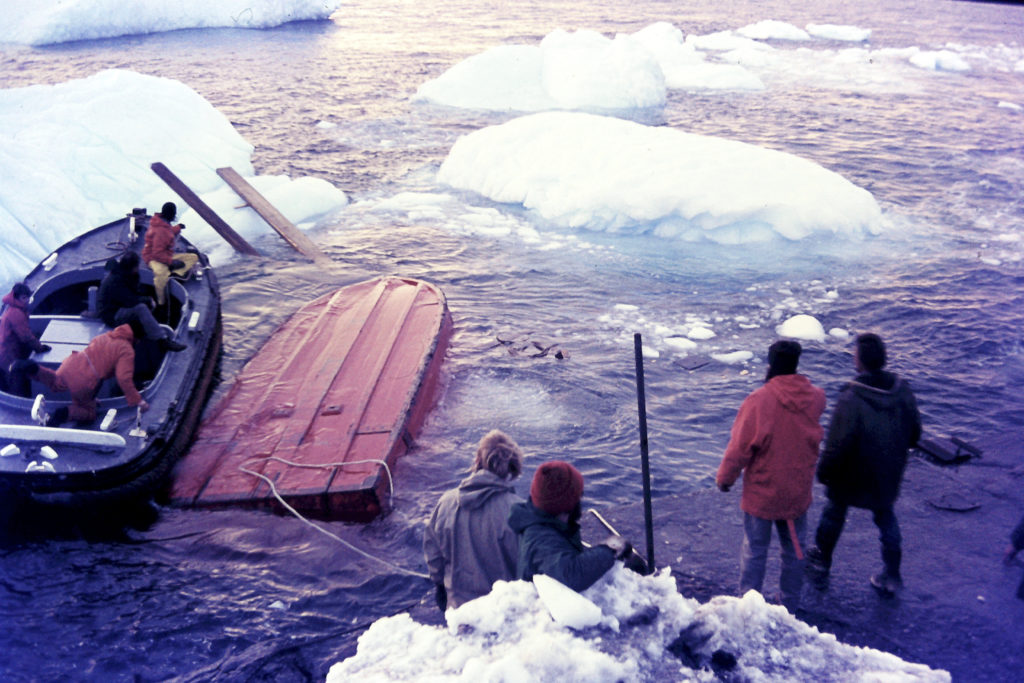LOSS OF MUSKEG TRACTOR DURING RELIEF 1975 (continued)

An attempt was made in the evening of the first full day of unloading to discharge the vehicle, when the swell was very much lower and the sea calmer, than it had been for some weeks. The crane on the vehicle was aggravating the instability of the unit in the scow, and the vessel was reboarded on Bransfield before ever leaving the ship’s side. No more was said of the matter, and it was assumed that the project was at least temporarily shelved until the crane was removed and the scow stabilised.
During the early hours of next morning, a lull in the cargo around 4 a.m. caused some puzzled faces, as nothing came ashore for some time and avtur was the cargo at the time, which normally had a very quick loading time. Eventually the scow was seen to leave Bransfield complete with Muskeg onboard.

Good progress was made across to the jetty area, the scow now running into small swell and wind waves. As the launch turned in to the jetty, however, the scow was turned broadside to the, and began to roll markedly with the high C of G. The scow did however reach the jetty, and we managed to moor it stern-to the jetty as required. While the process of fitting a wire tow rope to the keg from the rear of the Uti keg on the jetty was going on, a matter of half a minute or so, a couple of larger than usual swells rocked the scow and the vehicle shifted sideways on the deals a few inches, causing the scow to be very unstable indeed, rocking very close to the water line with each wave. Newman rapidly prepared to drive the vehicle ashore, with Carter on the Uti to assist momentum. Even while waiting for the right wave, the scow was tipping alarmingly, and there was obviously no chance of righting it, or returning to the ship.

At the best possible time, John Newman drove forward, Johnny Carter also, and the right-hand track of the keg mounted the jetty. Unfortunately as the scow was sitting unbalanced the left hand track did not mount, instead hitting the front of the jetty. As the swell fell away, the keg dropped back into the scow and slewed sideways. As at this stage nothing more could be done although attempts were made to drive with each wave. Each wave also rocked the scow further eventually rocking it below the water line. The scow turned over, tipping the keg, Newman scrambled ashore, and the vehicle began to sink.

(Photo: ‘Golly’ Gallsworthy)
This caused the Uti on the jetty to be dragged backwards, locking solidly the brakes. Fortunately as the keg settled into the water the momentum slowed, and Wormald was able to pull out the towing pin to avoid losing the second vehicle. This done the keg sank rapidly.

(Photo: ‘Golly’ Gallsworthy)
The scow was floating upside down with about one foot above water, and after some discussion with the mate aboard the launch, it was decided the only course was to tow it back to the ship in that position. This was done, and the scow eventually recovered.
As no diving equipment was onboard the ship (although a South Georgia bound diver was) no attempt was made to recover the vehicle at that time.
In February the research vessel “Hero” was working in our area, and diver assistance was requested to try and locate the vehicle and fasten three steel cables to it, in the hope of trying to recover with the International Harvester winch. On the 15th Feb, Hero visited and sent ashore two divers (also two geologists to discuss the local geology with Anckorn, Care and Edwards). The divers took down three steel cables, and after a few minutes located the vehicle, thirty yards out from the vehicle, in 65 feet of water. It was completely crushed, obviously due to the bergs which frequented the area, upside down, with its tracks, wheels and halfshafts torn off. Thus any attempt to recover it was abandoned. Although not questioned, no mention was made to by the divers of having seen seen the scow brackets, which fell off when the scow overturned, and which were Captain Phelp’s main concern.

Captain Phelps stated, however, that the Hero divers informed him these had been seen. If Bransfield had had a diver and gear onboard another attempt could possibly have been made to recover them.
Steve Wormald Adelaide – Met, 1969, Stonington – GA – 1970, BC/GA – 1973, Rothera – Ops. Manager 1974-1977
